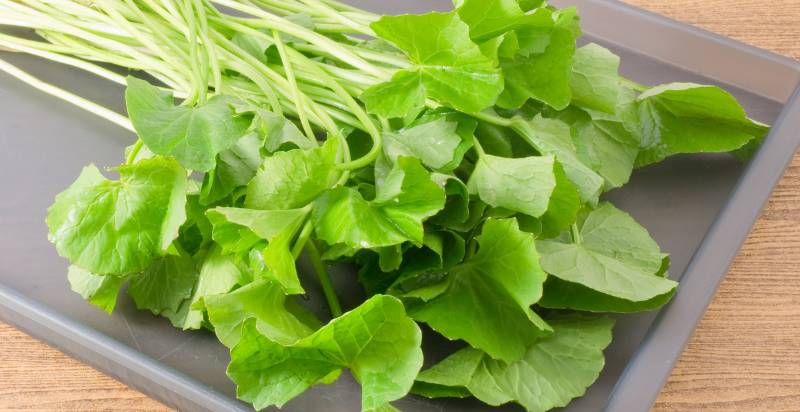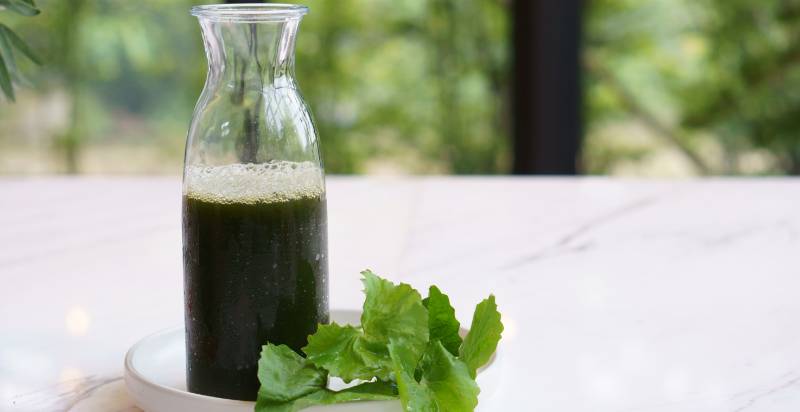Pennywort, also known as Centella Asiatica or Gotu Kola, is an herbaceous plant in Asia and Africa’s tropics and subtropics. It is native to India, Sri Lanka, and Madagascar. Pennywort has been used for centuries in traditional medicine to treat various conditions, including leprosy, wound healing, and rheumatism. It is also popular in many products designed to promote well-being and beauty. You need to know everything about Pennywort and its potential health benefits.
What is Pennywort?
Pennywort is a small herbaceous plant that grows to about 30-60 cm tall. It has slender, creeping stems and fan-shaped leaves with tiny white or pink flowers arranged along the stem. Its medicinal parts are its roots, leaves, and aerial parts. The active ingredients responsible for its medicinal properties are triterpenoid saponins, which are present in all parts of the plant.

History and Origin of the Pennywort
The use of pennywort dates back to ancient Ayurvedic medicine, where it was used to treat mental disorders such as depression and anxiety. In Chinese medicine, it was used as a diuretic and digestive aid. Throughout East Asian cultures, pennywort was employed to stop bleeding, heal wounds, improve circulation, and reduce fever. Today, Pennywort is widely used in traditional medicine worldwide for various ailments, including fever, indigestion, headaches, ulcers, and skin disorders.
Health Benefits of the Pennywort
Pennywort is believed to have numerous health benefits, including improved digestion, increased energy, and mental clarity. It is also thought to possess anti-inflammatory, antioxidant, and antimicrobial properties to support the immune system and reduce inflammation associated with arthritis or other inflammatory diseases.
Pennywort may also be beneficial for skin conditions such as eczema and psoriasis, as well as wrinkles or other signs of aging. Pennywort is also known as an adaptogen, meaning it helps the body cope with stress and fatigue by restoring balance to cells and organs. Studies have also suggested that it may reduce anxiety and improve cognitive function in people with age-related memory loss.

Where are Pennywort Grown and Harvested?
Pennywort is most commonly grown and harvested in SouthEast Asia, especially India, Thailand, and Vietnam. Other countries where it grows are Bangladesh, China, Indonesia, Cambodia, Laos, and the Philippines. Pennywort is also cultivated in Sri Lanka and Nepal.
In some tropical regions of Africa and Latin America, pennywort grows wild. It prefers wet environments with good drainage and plenty of humidity. Harvesting usually takes place during warm weather from May to September. The leaves are harvested individually or in small bunches by cutting them off near the base of the plant using sharp scissors or a knife. After harvest, the leaves are dried in the sun for several days before being ground into a fine powder and packaged for sale.

Flavor Profile of the Pennywort
Pennywort has a very distinctive and pleasant flavor. It is slightly sweet, with hints of citrus and earthiness. The underlying umami notes give it depth and complexity and make it an interesting ingredient in dishes.
Where to Find the Best Quality Pennywort?
When looking for the best quality Pennywort, find a supplier who sources their product from organic, sustainable farms. Look for suppliers that have certification and adhere to ethical practices. It is also important to ensure the Pennywort has been tested and approved by a reputable laboratory so you know it is safe to consume.
Additionally, look for Pennywort that has been processed without added chemicals or preservatives. This will ensure you get the highest quality product possible. You can often find good options at health food stores, specialty shops, and online retailers.
How to Store Pennywort?
Pennywort should be stored in a cool, dry place with good air circulation to prevent mold and rot. Store the pennywort stems in an upright position to reduce moisture buildup. Place the stems inside a plastic bag or container and leave enough room for air circulation.
If you store multiple cuttings, make sure they are spaced out from each other. Put larger plants in shallow plastic containers filled with water just deep enough to cover the roots. Change the water every few days to keep it fresh and bacteria-free.
Pennywort can also be propagated in soil, but ensure it is always kept moist and placed in a location with indirect sunlight. Regularly inspect your pennywort for any signs of disease or damage and remove them immediately. Follow these storage tips to keep your pennywort fresh and healthy.
How to Use Pennywort Vegetables in Recipes?
Pennywort can be used in various dishes, from salads and soups to stir-fries and curries. The leaves taste slightly bitter and pair well with acidic ingredients like lime juice or vinegar. Combine pennywort leaves with cucumber, tomato, red onion, and basil to make a simple salad. Dress the salad with olive oil, lemon juice, oregano, and salt.
Add pennywort leaves to your favorite curry recipe for a heartier dish with extra flavor and texture. For an aromatic stir-fry dish, you can also sauté the greens in garlic and ginger. If you’re looking for more creative ideas on how to use pennywort vegetables in recipes, try exploring regional cuisines such as Southeast Asian or Indian for inspiration.

Conclusion
Pennywort is a nutritious and versatile vegetable used in various dishes. It has a unique flavor profile with subtle hints of bitterness and sweetness, making it an interesting ingredient to use in recipes.
While Pennywort can often grow wild in some tropical regions, it is more commonly cultivated for commercial sale. Store Pennywort in a cool, dry place and inspect it regularly for signs of disease or damage. Try incorporating pennywort into your recipes for an extra boost of flavor and nutrition.
- Everything You Wanted to Know About Red Tamarillos - June 2, 2025
- A Guide to Tulips: Everything You Need to Know & More… - June 2, 2025
- Guanabana: Description, Flavor, Benefits, And Uses - May 27, 2025

1 thought on “Pennywort: Description, Flavor, Benefits, And Uses”
Comments are closed.